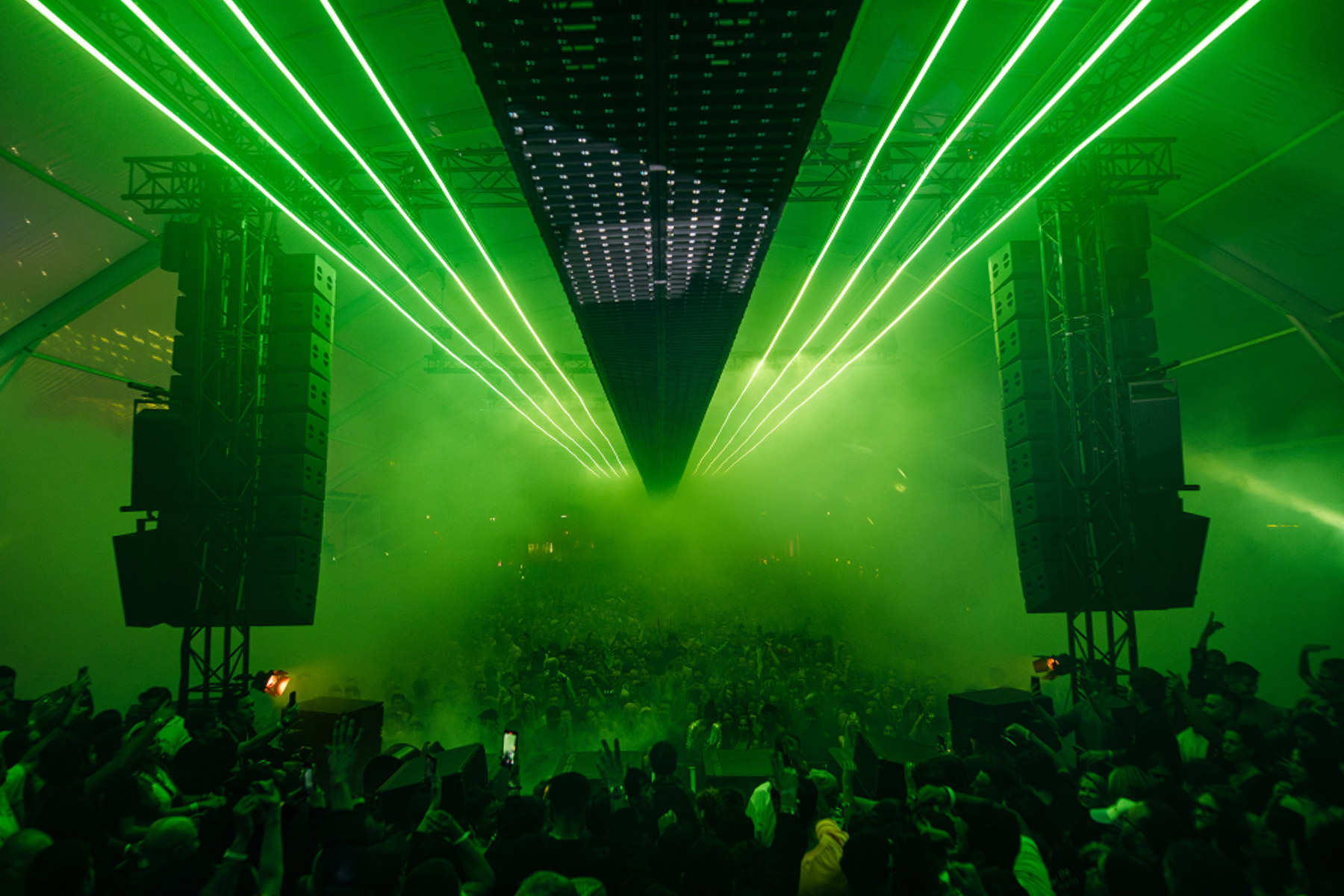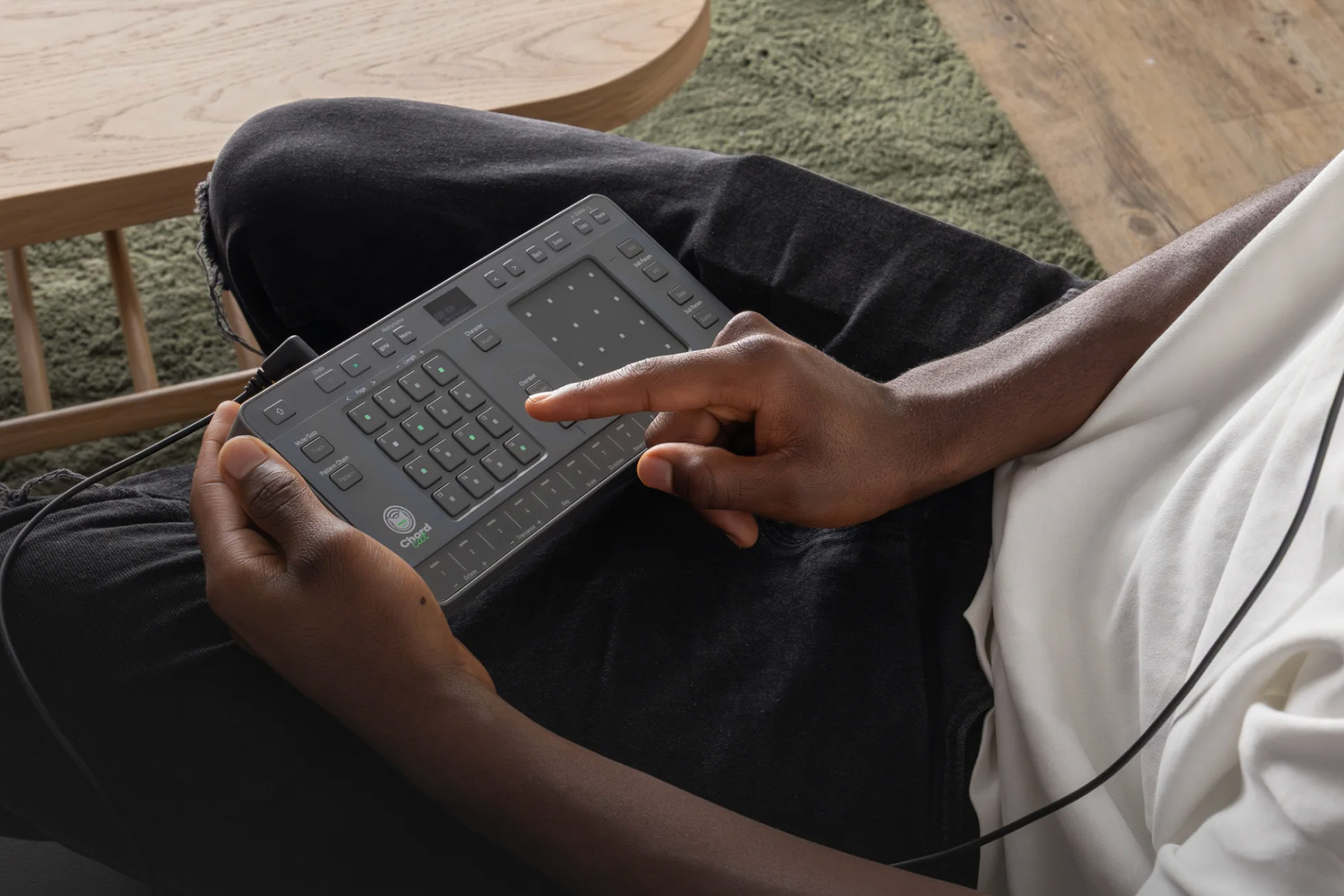As we end another year filled with new music and memories, we took some time to step back inside the studio and read one more time the many production tips that have been shared by top artists over the year. From highly detailed instructions for a better sound and on to creative insights, these artists held nothing back.
Photo by Codioful (Formerly Gradienta) on Unsplash
Here we selected 23 of the most unique studio tips (in alphabetical order) that will take your game to the next level.
- Remember the sphere
Your song is a sphere, dimensional along three axes: stereo width (mono/stereo or left/right), frequency (low to high), and presence (front to back, which is affected mostly by volume and compression). for a super clear mix, every element should have its own space, which can also help you think about arranging. If two or more elements overlap, it might be worth moving one around. Sometimes all you need to do is shift something up or down an octave to get it out of the way.
- Reference, reference, reference
Compare your tracks to others. Constantly. Most budding producers are also DJs, so surely you have a collection of tracks you like to play. Does your track sound like those? If not, you need to keep working. DJing your tracks with others that you know sound good is a great way to see if yours delivers. To fully take advantage of this tip, though, you’re going to need to learn how to master your own music. At least on a rudimentary level. I’m doing a lot of mixing and mastering for various labels and artists right now, and learning how to master my own tracks was probably the best thing that ever happened to my mixdowns. It taught me so much about how to listen for balance, and understanding what compression and limiting is going to do to the final product.

- Go against the grain
Have you ever heard the quote “Here’s to the crazy ones”? Do different things. Do not get carried away by market trends or the hype of something that is trending. Do what works for you. Big names in the music scene today also came from a starting point. But why nowadays are they still at the top? That’s because of their uniqueness. They have created their own “trends” and they didn’t follow the hype. So, do you for you. Something that helped me creatively when I started producing, was the fact that I did not follow musical theory in the first place. I was more concerned first with actually producing, not with reproducing something that already existed. Make sure to study that as it is necessary for your artistic evolution!
Make a comparison with visual art, for example. If you study how Van Gogh made ‘Starry Night’ and the techniques that he applied, you may get something close to it, but you will never be Van Gogh. You will be only creating a reproduction of it. So, worry first about creating your signature sound, your own techniques, and your own ways to only later apply the “rules” of it.
- Pour out the whole idea
Sometimes, when I’m in the studio and I’m faced with writer’s block, or even if I want to build a really good extended metaphor but I can’t quite put my hands on what I need to say, I find the best thing to do is pour out the whole idea. What I mean by this is to just start writing. Start writing everything about the idea; the random thoughts, the things you’re scared to say, the things you think won’t make sense…it doesn’t matter, just write them all down. After I’ve gotten everything out, I review what I’ve written and start puzzling together what really sticks out.
I use this same strategy when writing with other artists and writers as well. Imagine you’re building a Lego structure or a puzzle of some sort and you’ve been pulling out pieces one at a time but then you run into an impasse, that’s the moment you just pour out the whole bucket full of pieces and spread it out so you can see everything for what it is. This has often helped me lock in an idea and actually push it further than where I thought it should be.
- Create your own sound palette
Building upon the previous tip, it helps with your creative flow to have some favorite samples and instruments ready that work well for you. Having to browse through 100 presets on 15 different instruments when you have an idea in mind doesn’t help the process. Being able to sketch quickly when ideas come to mind is paramount to keeping creativity flowing before you “lose it”. Also, having some favorite samples that you use more often can become a signature of your sound. You don’t have to completely reinvent the wheel at every production. This could actually be counter-productive for your identity as an artist.
- Have an idea beforehand
Always have an idea when you go into the studio. My college background was as a visual artist, and we were told to never sit in front of a blank canvas without an idea, so always come up with a rudimentary idea! You don’t have to stick to it but you do need a starting
point to get the workflow going and so, hopefully, by the end of the day, you’ll have a working demo.

- Essentials
When you feel that a song is nearing completion, it’s crucial to assess the elements and determine what is truly essential. Take a step back and critically evaluate each component of the composition. Ask yourself if every element serves a purpose and contributes to the overall message and impact of the music. Aim to reduce the number of elements to the bare essentials. This process may not be easy, as you may be attached to certain sounds or ideas, but by eliminating unnecessary elements, you create more space for each element to shine. This approach can help refine and enhance the impact of your music, allowing the essential elements to take center stage and deliver a more focused and impactful listening experience.
- Monitor at a moderate to quiet volume
Greg in our band was notorious for years for blasting the monitors at ear-piercing levels, cause “he wanted to feel it.” He’s really turned a corner, swearing by monitoring at very conservative volumes. The rest of the band is happy and couldn’t agree more. There are a couple of reasons for this.
First off, blasting stuff at really high volumes exhausts your ears quickly; and after a while, you’re not really hearing things with the utmost accuracy. You don’t want to hit play on that idea from yesterday and have it sound nothing like the fire that you remember. A point closely related to this is that everything sounds great when it’s played really loud. So if you want to make sure your ideas are translating, make sure they sound good when not blared at 11. Say this with us: “A good piece of music (song idea, beat, loop) will sound exciting when played quietly, or really loud.”
- Train your ears
Your ears are the most powerful tool in your arsenal, especially once you’re familiar with your speakers and room. A recent tip I discovered is an ear-training exercise using vowel sounds to label frequencies between the 250Hz — 4kHz range. I imagine if I’d discovered this exercise when I was starting out, I’d quickly be able to identify problem frequencies in a mix without relying on an EQ visualizer. Carry out critical listening. Use songs you think have been particularly well produced and mixed. Sit down and identify what is happening in the arrangement, and what is it about that specific mix that works.
- Use an acapella to guide you
I make a lot of vocal records and I will often start with an acapella from a song I really like. I use it to build the melodic framework of my track and work out an arrangement.
Once I’m happy with the demo, I remove the vocal and start sending the instrumental out to vocalists and songwriters that I want to work with. This gives space in the arrangement for a vocal to sit. It might not end up being the final arrangement, but it gives a good starting point.

- Back to the origins
As you progress, keep an eye on what exactly hooked you in at the very beginning, it’s a thin thread to keep the essence through to the end of production. The smallest edit can have a huge impact on distorting what is being said. Additional tracks often deceive you, more instruments take up space, straightening and ironing out things during the process, or you get stuck on some FXs like a 12-year-old and then celebrate it for a few days, but you have completely forgotten what it was all about. So right after capturing the idea, save the project under a new name so you can get back to the rough source occasionally.
- Separate your workflow
Treat production and mixing as separate processes. I teach both production and mixing as part of my day job. One of the biggest mistakes I see is people overlapping the two and it is killing their workflow. Production should be about letting loose with creativity, getting as much of your best creative ideas down as possible, and not worrying about whether your snare sounds too harsh at 5000 Hz. Save things like EQ and compression until you’ve got a finished arrangement. Mix it on a separate day altogether on fresh ears.
- Trusting inner intelligence
Once you’ve laid the foundation through your intuitive first take, it becomes an artistic puzzle. The raw moments you’ve captured act as puzzle pieces, ready to be rearranged, expanded, and honed. As you “rinse and repeat”, the structure of the song solidifies. With the basic outline in place, it’s like a coloring book, guiding you effortlessly. Words, melodies, and harmonies fit into their right places, painting a complete, resonant picture.
- The importance of using a spectrum analyzer
When producing electronic music, it’s important to use a spectrum analyzer to analyze the frequency content of your tracks, allowing you to see which frequencies are present and how they are balanced.
By using a spectrum analyzer, you can identify any frequency imbalances in your tracks and make adjustments to ensure that the mix is balanced and sounds good on different sound systems. For example, you might notice that the bass frequencies are overpowering other elements of the mix, or that the high frequencies are too bright and harsh.
In addition, it’s also important to become familiar with the sound image of your music. This means understanding how different sounds and elements in the mix are positioned in the stereo field.
Listening to other tracks in your genre and paying attention to how the different elements are positioned in the stereo field is crucial.

- Secrets to achieving dynamic synth sounds in your music
Getting the best dynamic from a synth involves a combination of careful sound design and effective mixing techniques. Here are some secrets to help you achieve the desired level of dynamic in your synth sound.
Use modulation. Modulation effects, such as LFOs and envelopes, can add a sense of movement and variation to your synth sound. Experiment with different modulation sources and parameters to create interesting and dynamic sounds.
Layering multiple sounds together can help create a more complex and dynamic sound. Use different synths or layers of the same synth sound to create a full and varied sound that evolves over time. Many synths respond to velocity and aftertouch, allowing you to add dynamic variation to your performance. Use these features to create a more expressive and dynamic performance.
During mixing, use compression to even out the levels of your synth sound and make it sit better in the mix. Automation can also be used to create dynamic changes throughout the song. Pay attention to frequency balance, dynamic range can be improved by ensuring that the frequency balance of your synth sound is appropriate. Too much energy in certain frequency ranges can limit the dynamic range of the sound.
Overall, getting the best dynamic from a synth requires a combination of careful sound design and effective mixing techniques. By using modulation, layering sounds, utilizing velocity and aftertouch, applying compression and automation, and paying attention to frequency balance, you can create dynamic and engaging synth sounds that add depth and interest to your music.
- Always carry a recording device with you (use your phone)
In my experience, ideas don’t always come exactly when I’m in the studio. Ideas can come literally anytime, right before going to sleep, while traveling, while taking a shower, etc… always be prepared to capture ideas when they come. Don’t say “I’ll remember it and record it later when I’m back in the studio”. You will most likely forget the idea before you’re back in the studio. I use my phone to record ideas, I sing them as accurately as possible and explain them in the phone recording so they’re easy to understand when I’m back in the studio. This is probably my favorite tip of all!
- Positioning matters
Turn your melodic hook into MIDI to get both the rhythm and the notes of it. Then use that groove/notes for your bass and other melodic stems, and use the groove/rhythm for percussion. Extract the predominant groove of your rhythmics and apply it to some of the elements. It will create a whole that is coherent and that fits the groove of the track to perfection.
- Trust your ears over your eyes
Don’t overanalyze your music. If it sounds good to your ears, it’s probably good. Music is an auditory experience, so let your instincts guide you.

Sydney Blu & Shelley Johannson
- Have a sound in mind
At the beginning of your collaborative journey, choose where the music should go. It’s like having a map to point you in the right direction. In this case, we chose a specific label to help guide our sound. Reference tracks serve as a touchstone to make sure we were merging our sounds into something fitting.
- How I use a reverb send channel on my drums
To create some tension and some noises in my build-up, I use a reverb send channel. In a return channel, first thing is to add an overdrive to make the input scream, and add an equalizer to cut all the low frequencies. Then you can add your favorite reverb plugin with the Dry/Wet button at 100% wet. I prefer to reduce a bit the stereo width to make it more present in the mix. Then I put a second overdrive and finally a last equalizer to sculpt the sound how I like. Now, you can send the channel(s) of your choice into that return channel at the moment of your choice. For example, if you send a snare into this channel, you will feel like it’s a crash cymbal.
- Creative Vocal FX Technique
We’re going to make a drawn-out and delayed vocal effect. I use this creative FX technique in a ton of my tracks as I find it’s a great way to make a standard sample or vocal sound unique while simultaneously creating an atmospheric soundscape. My favorite part about it as well as that it’s fairly simple to create and set up for future use. I use this technique as ear candy throughout my track, in a breakdown, or as a transitional effect, but of course, you can use it whenever you deem fit.
Start by finding a sample. This can be done using a vocal from a vinyl, acapella, sample pack, or YouTube for that matter. If you already have a vocal in your track, duplicate it onto a new channel. Now, time stretch it by a bar or two. In Logic, this can be done by holding ALT, clicking, and dragging out the bottom right corner.
Next, apply some EQ to clean up the low and high ends of the vocal, and remove any resonance frequencies. I want this effect sitting in the back of the mix so I’m using a hi-cut at around 2k to remove a lot of the top end of the vocal. Your vocal should now slightly resemble the sound of a telephone speaker now but with a touch more body to it.
Now take your favorite reverb plug-in and place it directly on the channel. I’m using a ‘Large Room’ setting in Valhalla Room at around 50% wet and with a decay time of around 7 seconds. This will further aid in placing your effect in the back of your mix. Then clean up the reverb you just applied with an EQ and optionally, you can now apply a decibel or two of compression to round out the channel.
Finally, create a send delay channel. This is where the atmosphere of the effect really comes out. I’m using Valhalla Delay and I love the ‘Aging Pearls 01’ preset. You can adjust your send as much as you want, but I’m using quite a lot as I want this vocal effect to really cascade across my track.
You should now have a washed-out and slow vocal effect that can be used in combination with your original vocal to create a unique effect. To further customize, you can export the channel, import the file back into your DAW, time stretch the file another bar or two, and apply more delay or reverb to create a really unique and drawn-out atmosphere. I’ve used this technique in a lot of my songs, including ‘Lost On You’, ‘EQ64’, and ‘House Of Lords’ to name a few. Also worth noting – this effect can be used on any form of audio and is not limited to vocals. I love using it on pads and other atmospheric effects to create ethereal and cavernous soundscapes.

- Limit yourself
It’s very easy to download all the plugins that were ever created, buy all the hardware synths, and dare I say it, set up a modular wrack the size of your room. However, the more options you have the more time it takes you to make a decision. By limiting yourself to a couple of synths and a couple of plugins, it will allow you to really work hard on getting the best sound out of those specific units. Therefore making it more likely you are actually going to finish a record and not spend your entire life tinkering in the studio.
- Location
You should give different depths to the sounds in the mixdown. Use three different reverbs through the return channels. A short, a medium, and a long reverb. Use each reverb according to the placement you want to give each sound. You can also apply the same reverberation to several sounds grouped in a channel, for example, percussion.








